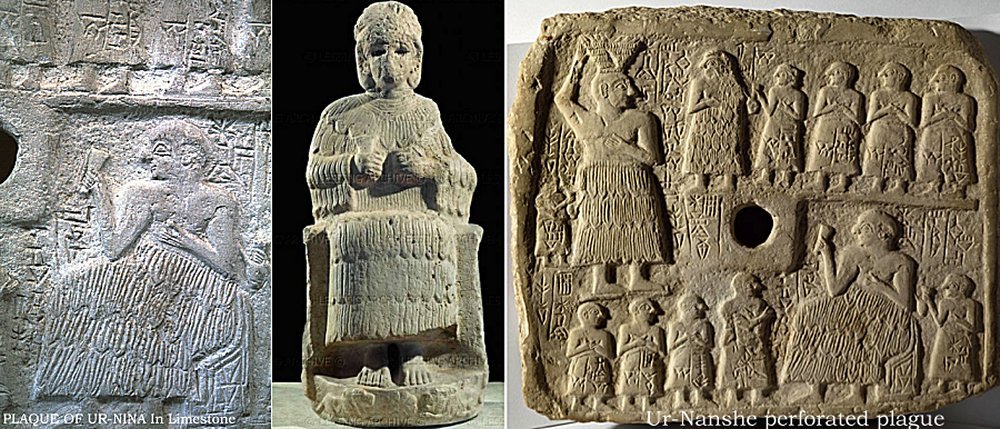Votive Plaque Dedicated To Dudu High Priest Of God Ningirsu
A.Sutherland - AncientPages.com - Votive plaques were characteristic and widespread pieces of art in the Second and Third Early Dynastic Periods (2800-2340 BC) of Sumer.
With round perforations in the center, they were decorated with diverse incised or carved scenes.
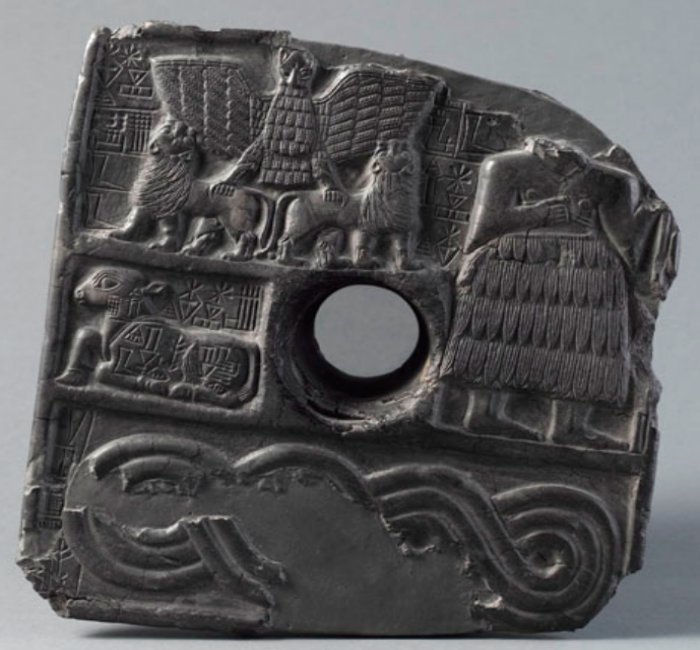
Perforated plaque of Dudu, the high priest of Ningirsu in the reign of Entemena, prince of Lagash (c.2450 BC). Credits: Louvre
This relief, with its central round perforation, is divided into four, horizontal parts (registers) and according to a Sumerian inscription, it depicts Dudu, the high priest of the god Ningirsu during the reign of Entemena - the king of Lagash, who reigned about 2418-2391 BC
Dudu’s figure occupies the height of two registers on the plaque and faces right; the figure is dressed in the kaunakes, (originally traced to the Sumerian civilization, which existed even before 4,000 BC), a skirt in sheep's wool or other tufted material.
Incised to his left is the lion-headed eagle, called Imdugud, a symbol of the god Ningirsu and emblem of Lagash, as found in other similar plaques from Telloh (Tello). The eagle is depicted with wings outspread, two lions gripped in his talons. In the middle, a calf is shown lying down, while the lower register is filled by a motif of running water, probably symbolizing the subterranean water reserves for crops or source of fertility.
The dedicatory inscription, confined to the area left free by the image in the upper part, runs over the body of the calf: "For Ningirsu of the Eninnu, Dudu, priest of Ningirsu ... brought [this material] and fashioned it as a mace stand."
See also:
Millennia-Old Sumerian Tripod Vase Dedicated To God Ningirsu, The Son Of Enlil
Ur-Nammu - Popular And Accomplished Ruler Of Sumer
Codes Of Ur Nammu: World’s Oldest Known Law Code
King Ur-Nammu – King Of Ur, King Of Sumer And Akkad – The One Who Built The Temple Of Enlil
Made of gypsum or limestone, the Sumerian perforated plaques are decorated with scenes from Sumerian life and have been excavated at many sites in Mesopotamia. About 120 of them are known to exist now and about fifty plaques were found in religious buildings.
They are usually rectangular in form and decorated with scenes incised or carved in relief.
The exact function of this kind of plaques is unknown, and so is the purpose of the central perforation. The inscription here at first led scholars to consider them as mace stands, but it seems unlikely.
Some have suggested they were to be hung on a wall, the hole in the center taking a large nail or peg, they could even part of a door-closing mechanism.
Perforated plaques such as this one were usually organized in horizontal registers, depicting various ceremonies, banquets, the construction of buildings (as in the perforated plaque of Ur-Nanshe), and other royal events.
Written by – A. Sutherland - AncientPages.com Senior Staff Writer
Copyright © AncientPages.com All rights reserved. This material may not be published, broadcast, rewritten or redistributed in whole or part without the express written permission of AncientPages.com
Expand for referencesReferences:
- Dickin, Pagan Trinity
More From Ancient Pages
-
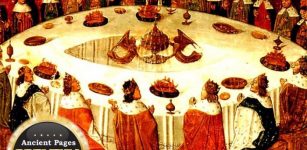 The Faery Grail Of Hospitality And Accord – Secrets Of The Elucidation – Part 2
Featured Stories | Sep 27, 2019
The Faery Grail Of Hospitality And Accord – Secrets Of The Elucidation – Part 2
Featured Stories | Sep 27, 2019 -
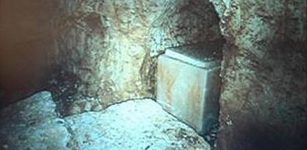 Controversial Ancient Tomb Could Prove The Existence Of Biblical Jonah
Archaeology | Mar 9, 2014
Controversial Ancient Tomb Could Prove The Existence Of Biblical Jonah
Archaeology | Mar 9, 2014 -
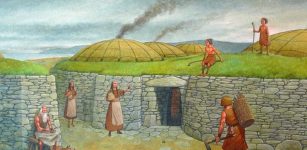 Obscure History Of Skara Brae – Home To Dwarfs
Civilizations | Apr 12, 2017
Obscure History Of Skara Brae – Home To Dwarfs
Civilizations | Apr 12, 2017 -
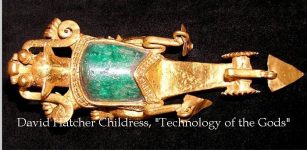 Prehistoric Heavy Machinery Of The Ancient Times Or A Piece Of Jewelry?
Ancient Technology | Sep 12, 2018
Prehistoric Heavy Machinery Of The Ancient Times Or A Piece Of Jewelry?
Ancient Technology | Sep 12, 2018 -
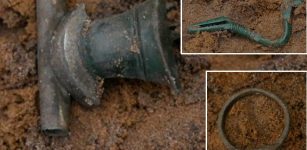 Four Roman-Era Brooches And A Ring Found In The Borki Forest, Poland
Archaeology | Mar 15, 2024
Four Roman-Era Brooches And A Ring Found In The Borki Forest, Poland
Archaeology | Mar 15, 2024 -
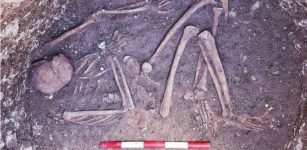 Rare Iron Age Crouch Burial Discovered At The Margate Caves Site In Kent, UK
Archaeology | Mar 8, 2018
Rare Iron Age Crouch Burial Discovered At The Margate Caves Site In Kent, UK
Archaeology | Mar 8, 2018 -
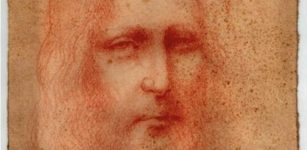 Unknown Sketch Of Jesus Christ By Leonardo Da Vinci Could Be The Holy Grail Of Art
News | Nov 24, 2020
Unknown Sketch Of Jesus Christ By Leonardo Da Vinci Could Be The Holy Grail Of Art
News | Nov 24, 2020 -
 Nurikabe: Trickster That Manifests Itself As Invisible, Impassable Wall In Japanese Old Beliefs
Featured Stories | Oct 21, 2019
Nurikabe: Trickster That Manifests Itself As Invisible, Impassable Wall In Japanese Old Beliefs
Featured Stories | Oct 21, 2019 -
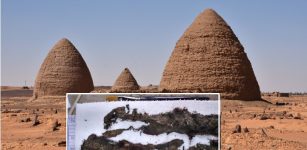 People Of Old Dongola Recycled And Dyed Clothes
Archaeology | Jan 24, 2024
People Of Old Dongola Recycled And Dyed Clothes
Archaeology | Jan 24, 2024 -
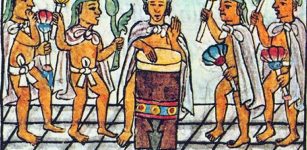 Daily Life Of Télpochcalli Students Of The Aztec Empire Was A Challenge
Ancient History Facts | Apr 20, 2020
Daily Life Of Télpochcalli Students Of The Aztec Empire Was A Challenge
Ancient History Facts | Apr 20, 2020 -
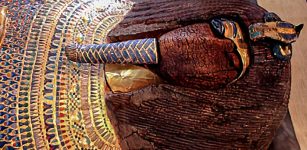 Dispute And Mystery: Strange Case Of The Tomb KV55 In The Valley Of Kings, Egypt
Civilizations | Oct 8, 2015
Dispute And Mystery: Strange Case Of The Tomb KV55 In The Valley Of Kings, Egypt
Civilizations | Oct 8, 2015 -
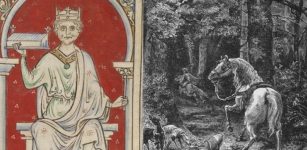 Was King William II Murdered In The New Forest?
Featured Stories | Aug 5, 2021
Was King William II Murdered In The New Forest?
Featured Stories | Aug 5, 2021 -
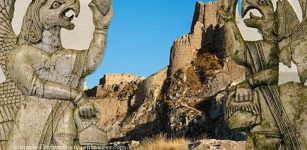 Ancient Settlement Inhabited By Urartian People – Unearthed
Archaeology | Oct 13, 2020
Ancient Settlement Inhabited By Urartian People – Unearthed
Archaeology | Oct 13, 2020 -
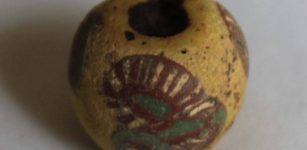 Unique Glass Bead From The Time Of Jesus Discovered In Fire Pit In Sweden
Archaeology | Jun 17, 2017
Unique Glass Bead From The Time Of Jesus Discovered In Fire Pit In Sweden
Archaeology | Jun 17, 2017 -
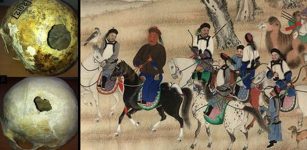 Siberia Had A Major Skull Surgery Center 2,500 Years Ago
Ancient History Facts | Jul 19, 2019
Siberia Had A Major Skull Surgery Center 2,500 Years Ago
Ancient History Facts | Jul 19, 2019 -
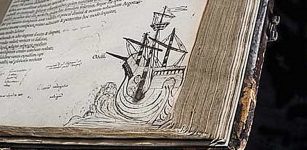 January 2016: Lost Library Of John Dee Revealed In A Special Exhibition
Archaeology | Jan 24, 2016
January 2016: Lost Library Of John Dee Revealed In A Special Exhibition
Archaeology | Jan 24, 2016 -
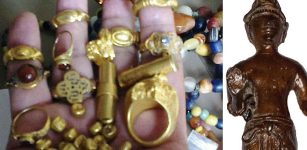 Legendary Lost Island Of Gold Of The Mysteriously Vanished Srivijaya Civilization Found Underwater
Archaeology | Oct 25, 2021
Legendary Lost Island Of Gold Of The Mysteriously Vanished Srivijaya Civilization Found Underwater
Archaeology | Oct 25, 2021 -
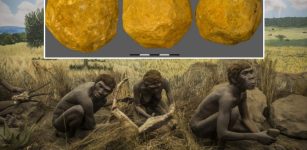 Are The Mysterious ‘Ubeidiya Limestone Spheroids Of Early Hominins Evidence Of Intentional Symmetric Geometry?
Archaeology | Sep 6, 2023
Are The Mysterious ‘Ubeidiya Limestone Spheroids Of Early Hominins Evidence Of Intentional Symmetric Geometry?
Archaeology | Sep 6, 2023 -
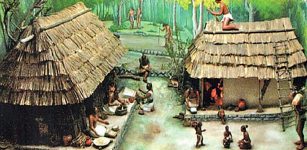 Ancient Maya: Wealth Inequality And Despotism That Governed The Society
Archaeology | Mar 26, 2021
Ancient Maya: Wealth Inequality And Despotism That Governed The Society
Archaeology | Mar 26, 2021 -
 Story Behind The Two Keys On Vatican’s Flag
Ancient History Facts | Feb 28, 2018
Story Behind The Two Keys On Vatican’s Flag
Ancient History Facts | Feb 28, 2018

